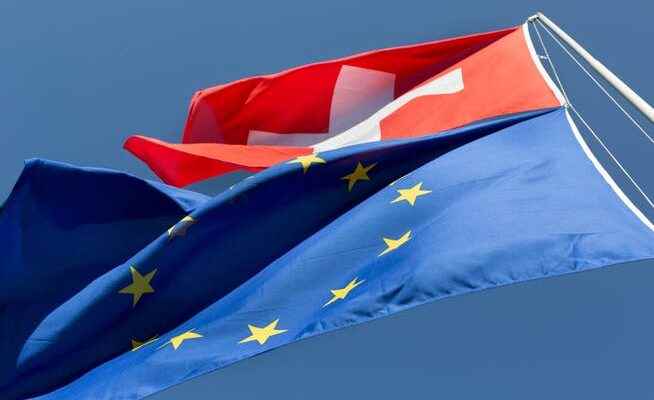Switzerland must not react defensively in relations with the EU. With autonomous reforms, but above all with a proposal to modernize the free trade agreement of 1972, it should draw the law of action into its own hands. The once rather insidiously hidden idea could now help to break the current blockade.
Switzerland can take the EU as a model without adopting everything at once.
In an interview on the occasion of her resignation as head of Seco, State Secretary Marie-Gabrielle Ineichen-Fleisch stated that she believed in a solution to the problems between Switzerland and the EU within a maximum of four years, perhaps earlier.

Gerhard Schwarz was head of the NZZ business editorial team and is now President of the Progress Foundation.
Her sober composure contrasts pleasantly with the alarmism that is being cultivated in parts of business and society by those people who are undeterred by the false narrative that Switzerland unilaterally broke off the negotiations on the framework agreement. Bern only reacted, albeit indecently late, to the EU’s declaration that there was nothing more to negotiate. However, I share the concern of the outgoing State Secretary that Switzerland is now acting defensively and is therefore coming under pressure or is putting itself under pressure.
Switzerland must move. There are decisions that Switzerland can make completely autonomously. So, as Ms. Ineichen-Fleisch suggests, it should finally resolve state aid in line with the market economy in its own best interests. In doing so, it can take the EU as a model without adopting everything at once. When it comes to the accompanying measures, Switzerland should also try to get away from the greatest exaggerations and the manner in which these measures are implemented, which is often perceived as harassing by the neighboring regions close to the border. Neither are liberal glories and are anything but beneficial for Switzerland as a business location.
Surprisingly, another possible direction is hardly mentioned, namely the modernization of the free trade agreement of 1972. In the appendix to the draft for the institutional framework agreement (InstA), such a modernization was postulated in a rather hidden way. It is therefore also wanted by the EU. However, the game of hide-and-seek had a tangible reason: the aim was to subject the modernized free trade agreement to the rules of the framework agreement as well. I didn’t want to make that clear.
But now the situation has changed. Without subordination to a framework agreement, the modernization of the 1972 agreement, a liberalization treaty between sovereign partners without superiority or subordination, makes sense. It would be about better cooperation at customs, simplification of the rules of origin, regulation of conformity assessments, inclusion of services, treatment of intellectual property and clarification of issues such as government contracts, submissions and state aid.
This requires the EU to get involved, but since it approved the modernization of the free trade agreement within the framework of the InstA, it should not oppose it now. Conversely, in Switzerland, those who were against the modernization because it was subject to the InstA have run out of objections. In this respect, a Swiss proposal to modernize the free trade agreement would not only be a sign of good will, but above all a sign that Switzerland knows what it wants.
